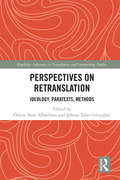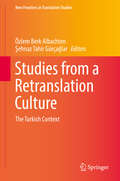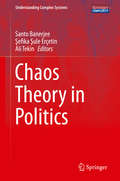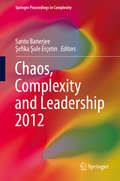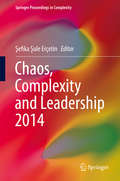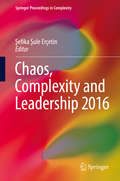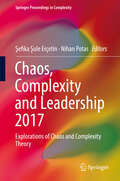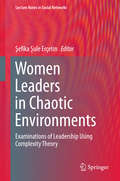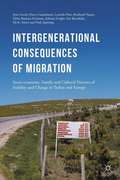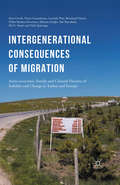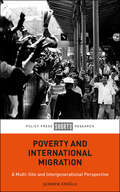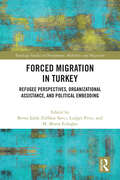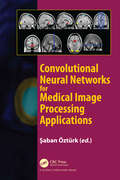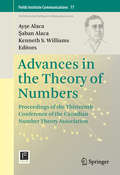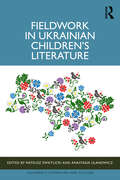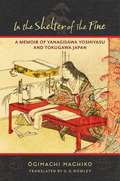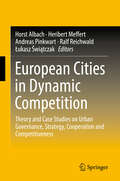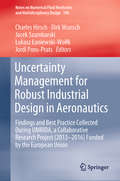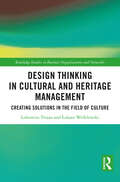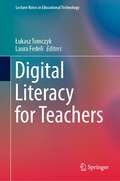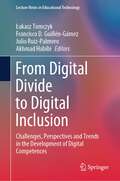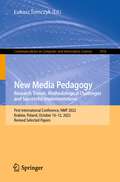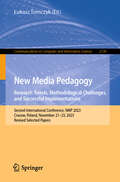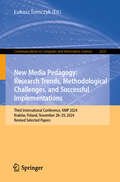- Table View
- List View
Perspectives on Retranslation: Ideology, Paratexts, Methods (Routledge Advances in Translation and Interpreting Studies)
by Özlem Berk Albachten Şehnaz Tahir GürçağlarPerspectives on Retranslation: Ideology, Paratexts, Methods explores retranslation from a variety of aspects and reflects methodological and theoretical developments in the field. Featuring eleven chapters, each offering a unique approach, the book presents a well-rounded analysis of contemporary issues in retranslation. It brings together case studies and examples from a range of contexts including France, the UK, Spain, the US, Brazil, Greece, Poland, modern Turkey, and the Ottoman Empire. The chapters highlight a diversity of cultural settings and illustrate the assumptions and epistemologies underlying the manifestations of retranslation in various cultures and time periods. The book expressly challenges a Eurocentric view and treats retranslation in all of its complexity by using a variety of methods, including quantitative and statistical analysis, bibliographical studies, reception analysis, film analysis, and musicological, paratextual, textual, and norm analysis. The chapters further show the dominant effect of ideology on macro and micro translation decisions, which comes into sharp relief in the specific context of retranslation.
Studies from a Retranslation Culture: The Turkish Context (New Frontiers in Translation Studies)
by Özlem Berk Albachten Şehnaz Tahir GürçağlarThis book highlights the unique history and cultural context of retranslation in Turkey, offering readers a survey of the diverse range of fields, disciplines, and genres in which retranslation has assumed a central position. Further, it addresses largely unexplored issues such as retranslation in Ottoman literature, paratextual positioning and marketing of retranslations, legal retranslation, and retranslation in music. As such, it makes a valuable contribution to the growing body of research on retranslation by placing special emphasis on non-literary translation, making the role of retranslation particularly visible in connection with politics and philosophy in Turkey.
Chaos Theory in Politics (Understanding Complex Systems)
by Santo Banerjee Şefika Şule Erçetin Ali TekinThe present work investigates global politics and political implications of social science and management with the aid of the latest complexity and chaos theories. Until now, deterministic chaos and nonlinear analysis have not been a focal point in this area of research. This book remedies this deficiency by utilizing these methods in the analysis of the subject matter. The authors provide the reader a detailed analysis on politics and its associated applications with the help of chaos theory, in a single edited volume.
Chaos, Complexity and Leadership 2013 (Springer Proceedings in Complexity)
by Santo Banerjee Şefika Şule ErçetinThese proceedings from the 2013 symposium on "Chaos, complexity and leadership" reflect current research results from all branches of Chaos, Complex Systems and their applications in Management. Included are the diverse results in the fields of applied nonlinear methods, modeling of data and simulations, as well as theoretical achievements of Chaos and Complex Systems. Also highlighted are Leadership and Management applications of Chaos and Complexity Theory.
Chaos, Complexity and Leadership 2014 (Springer Proceedings in Complexity)
by Şefika Şule ErçetinThis work represents the third entry of the series of works on "Chaos, Complexity and Leadership". Contents of the book are composed from broad range of chaos, complexity and their applications in multi disciplines. Articles reflect different perspectives in the field of applied nonlinear methods, modeling of data and simulations as well as theoretical achievements of chaos and complex systems. In addition to this, readers are going to find new applications in leadership and management of chaos and complexity theory such as in fields from education to politics. It is completely new and fresh piece of mind for readers who are interested in chaos, complexity and especially leadership.
Chaos, Complexity and Leadership 2016
by Şefika Şule ErçetinThis book covers the proceedings from the 2016 International Symposium on Chaos, Complexity and Leadership, and reflects current research results of chaos and complexity studies and their applications in various fields. Included are research papers in the fields of applied nonlinear methods, modeling of data and simulations, as well as theoretical achievements of chaos and complex systems. Also discussed are leadership and management applications of chaos and complexity theory.
Chaos, Complexity and Leadership 2017: Explorations Of Chaos And Complexity Theory (Springer Proceedings in Complexity)
by Şefika Şule Erçetin Nihan PotasThe proceedings of the 2017 Symposium on Chaos, Complexity and Leadership illuminate current research results and academic work from the fields of physics, mathematics, education, economics, as well as management and social sciences. The text explores chaotic and complex systems, as well as chaos and complexity theory in view of their applicability to management and leadership.This proceedings explores non-linearity as well as data-modelling and simulation in order to uncover new approaches and perspectives. Effort will not be spared in bringing theory into practice while exploring leadership and management-laden concepts. This book will cover the analysis of different chaotic developments from different fields within the concepts of chaos and complexity theory. Researchers and students in the field will find answers to questions surrounding these intertwined and compelling fields.
Women Leaders in Chaotic Environments: Examinations of Leadership Using Complexity Theory (Lecture Notes in Social Networks)
by Şefika Şule ErçetinThis book spotlights how women leaders behave in chaotic environments and features examples of women who have been key figures in determining complex socio-economic outcomes throughout history. Women leaders can be seen on many high- levels in the political arena, be they a prime minister, empress or opinion leader. From Kösem Sultan of the Ottoman Empire to Benazir Bhutto, women leaders have had an undeniable effect on modern history. Is it possible to understand the current role of women in politics in Turkey without the First Lady Emine Erdoğan? Can we analyze Europe’s future without Angela Merkel? There are many different books about women leaders' biography or memoirs of persons who worked closely with them. However, until now, no in-depth scientific analysis of such women leaders with respect to chaos and complexity theory has been available. This work represents a unique and important step towards filling this gap in research, and includes an epilogue presenting women’s leadership model visualized by an eight-pointed star.
FDI Spillovers, Financial Markets, and Economic Development
by Laura Alfaro Areendam Chanda Şebnem Kalemli-Özcan Selin SayekA report from the International Monetary Fund.
Intergenerational Consequences of Migration: Socio-Economic, Family and Cultural Patterns of Stability and Change in Turkey and Europe
by Helen Baykara-Krumme Lucinda Platt Niels Spierings Ayse Guveli Harry B.G. Ganzeboom Bernhard Nauck Şebnem Eroğlu Sait Bayrakdar Efe K. SözeriIntergenerational Consequences of Migration.
Intergenerational consequences of migration: Socio-economic, Family and Cultural Patterns of Stability and Change in Turkey and Europe
by Helen Baykara-Krumme Lucinda Platt Niels Spierings Ayse Guveli Bernhard Nauck Şebnem Eroğlu Sait Bayrakdar Efe K. Sözeri Harry Ganzeboom Sebnem ErogluThis book analyzes the impact of migration on the lives of multiple generations of 2000 Turkish families. Exploring education, marriage, fertility, friends, attitudes and religiosity, it reveals transformations and continuities in the lives of migrants and their families in Europe when compared to their non-migrant counterparts in Turkey.
Poverty and International Migration: A Multi-Site and Intergenerational Perspective
by Şebnem EroğluInternational migration is a life-changing process, but do the migrants and their families fare economically better than those who stayed behind? Drawing on the largest database available on labour migration to Europe, this book seeks to shed light upon this question through an exploration of poverty outcomes for three generations of settler migrants spanning multiple European destinations, as compared with their returnee and stayer counterparts living in Turkey. As well as documenting generational trends, it investigates the transmission of poverty onto the younger generations. With its unique multi-site and intergenerational perspective, the book provides a rare insight into the economic consequences of international migration for migrants and their descendants.
Forced Migration in Turkey: Refugee Perspectives, Organizational Assistance, and Political Embedding (Routledge Studies in Development, Mobilities and Migration)
by Ludger Pries Şafak Zülfikar Savcı, Berna M. Murat ErdoğanTurkey hosts more refugees than any other country in the world, with forced migrants from Syria, Afghanistan, Pakistan, Iraq, and other countries converging, either with hopes to settle in Turkey or to continue onwards to the European Union (EU).This volume addresses the specific experiences and trajectories of forced migrants in Turkey in the context of local and national contexts and the future of EU-Turkey relations. It presents the demographics of forced migrants, the biographies and future plans of refugees, and their interactions with civil society, states, and international agencies. A focus is on organized violence and corresponding experiences in countries of origin, during transit, and at current places.Based on extensive quantitative and qualitative research, this book will be of interest to researchers and practitioners in the fields of migration, human security, and refugee studies, as well as of sociology, political sciences, and international relations.
Convolutional Neural Networks for Medical Image Processing Applications
by Şaban ÖztürkThe rise in living standards increases the expectation of people in almost every field. At the forefront is health. Over the past few centuries, there have been major developments in healthcare. Medical device technology and developments in artificial intelligence (AI) are among the most important ones. The improving technology and our ability to harness the technology effectively by means such as AI have led to unprecedented advances, resulting in early diagnosis of diseases. AI algorithms enable the fast and early evaluation of images from medical devices to maximize the benefits. While developments in the field of AI were quickly adapted to the field of health, in some cases this contributed to the formation of innovative artificial intelligence algorithms. Today, the most effective artificial intelligence method is accepted as deep learning. Convolutional neural network (CNN) architectures are deep learning algorithms used for image processing. This book contains applications of CNN methods. The content is quite extensive, including the application of different CNN methods to various medical image processing problems. Readers will be able to analyze the effects of CNN methods presented in the book in medical applications.
Advances in the Theory of Numbers: Proceedings of the Thirteenth Conference of the Canadian Number Theory Association (Fields Institute Communications #77)
by Kenneth S. Williams Ayşe Alaca Şaban AlacaThe theory of numbers continues to occupy a central place in modern mathematics because of both its long history over many centuries as well as its many diverse applications to other fields such as discrete mathematics, cryptography, and coding theory. The proof by Andrew Wiles (with Richard Taylor) of Fermat's last theorem published in 1995 illustrates the high level of difficulty of problems encountered in number-theoretic research as well as the usefulness of the new ideas arising from its proof. The thirteenth conference of the Canadian Number Theory Association was held at Carleton University, Ottawa, Ontario, Canada from June 16 to 20, 2014. Ninety-nine talks were presented at the conference on the theme of advances in the theory of numbers. Topics of the talks reflected the diversity of current trends and activities in modern number theory. These topics included modular forms, hypergeometric functions, elliptic curves, distribution of prime numbers, diophantine equations, L-functions, Diophantine approximation, and many more. This volume contains some of the papers presented at the conference. All papers were refereed. The high quality of the articles and their contribution to current research directions make this volume a must for any mathematics library and is particularly relevant to researchers and graduate students with an interest in number theory. The editors hope that this volume will serve as both a resource and an inspiration to future generations of researchers in the theory of numbers.
Fieldwork in Ukrainian Children’s Literature (Children's Literature and Culture)
by Świetlicki, Edited by MateuszFieldwork in Ukrainian Children’s Literature showcases the work of prominent scholars of children’s literature from Ukraine and the diaspora as it traces the history of books written, marketed for, and circulating among young people since the rise of Ukraine’s nationhood in the nineteenth century. This book encompasses a full range of texts and genres (e.g., fiction, nonfiction, poetry, picturebooks, graphic novels), with special attention given to the most important authors and works as defined by aesthetics (“literary excellence”), popularity, or historical and cultural significance. In its focus on ideology and historical context, the collection takes an interdisciplinary and transnational approach. It places titles and trends in broader context, considering the socio-political situation, changing taste, and the history of institutions that shape the production and reception of children’s literature. The collection addresses folklore and the beginnings of a distinct tradition of Ukrainian children’s literature produced in the nineteenth century; the role played by children’s literature in the maintenance of the Ukrainian literary tradition during the Soviet era; and the flourishing Ukrainian book market, with the appearance of numerous new genres and forms, and the growing significance of Ukrainian books around the world. The collection highlights the importance of familiarizing non-Ukrainian students and scholars of children’s literature with the richness of the country’s literary history and cultural distinctiveness. Fieldwork in Ukrainian Children’s Literature is intended primarily for scholars of children’s literature and culture, including specialists in the fields of literary studies, education, and Slavic studies.
In the Shelter of the Pine: A Memoir of Yanagisawa Yoshiyasu and Tokugawa Japan (Translations from the Asian Classics)
by Ōgimachi MachikoIn the early eighteenth century, the noblewoman Ōgimachi Machiko composed a memoir of Yanagisawa Yoshiyasu, the powerful samurai for whom she had served as a concubine for twenty years. Machiko assisted Yoshiyasu in his ascent to the rank of chief adjutant to the Tokugawa shogun. She kept him in good graces with the imperial court, enabled him to study poetry with aristocratic teachers and have his compositions read by the retired emperor, and gave birth to two of his sons. Writing after Yoshiyasu’s retirement, she recalled it all—from the glittering formal visits of the shogun and his entourage to the passage of the seasons as seen from her apartments in the Yanagisawa mansion.In the Shelter of the Pine is the most significant work of literature by a woman of Japan’s early modern era. Featuring Machiko’s keen eye for detail, strong narrative voice, and polished prose studded with allusions to Chinese and Japanese classics, this memoir sheds light on everything from the social world of the Tokugawa elite to the role of literature in women’s lives. Machiko modeled her story on The Tale of Genji, illustrating how the eleventh-century classic continued to inspire its female readers and provide them with the means to make sense of their experiences. Elegant, poetic, and revealing, In the Shelter of the Pine is a vivid portrait of a distant world and a vital addition to the canon of Japanese literature available in English.
European Cities in Dynamic Competition: Theory and Case Studies on Urban Governance, Strategy, Cooperation and Competitiveness
by Horst Albach Heribert Meffert Andreas Pinkwart Ralf Reichwald Łukasz ŚwiątczakWorld population and the number of city dwellers are steadily growing. Globalization and digitalization lead to an increased competition for skilled and creative labor and other economic resources. This is true not only for firms, but increasingly also for cities. The book elaborates on resulting challenges and opportunities for urban management from the European perspective, and discusses theories, methods and tools from business economics to cope with them. Contributions in this volume come from scholars and practitioners of economics, business administration and urban management, and cover aspects ranging from urban dynamics to city marketing. They draw on experiences from several European cities and regions, and discuss strategies to improve city performance including Open Government, Smart City, cooperation and innovation. The book project was initiated and carried out by the Center for Advanced Studies in Management (CASiM), the interdisciplinary research center of HHL Leipzig Graduate School of Management. It is addressed to scholars and managers in Europe and beyond, who will benefit from the scientific rigor and useful practical insights of the book.
Uncertainty Management for Robust Industrial Design in Aeronautics: Findings and Best Practice Collected During UMRIDA, a Collaborative Research Project (2013–2016) Funded by the European Union (Notes on Numerical Fluid Mechanics and Multidisciplinary Design #140)
by Charles Hirsch Dirk Wunsch Jacek Szumbarski Łukasz Łaniewski-Wołłk Jordi Pons-PratsThis book covers cutting-edge findings related to uncertainty quantification and optimization under uncertainties (i.e. robust and reliable optimization), with a special emphasis on aeronautics and turbomachinery, although not limited to these fields. It describes new methods for uncertainty quantification, such as non-intrusive polynomial chaos, collocation methods, perturbation methods, as well as adjoint based and multi-level Monte Carlo methods. It includes methods for characterization of most influential uncertainties, as well as formulations for robust and reliable design optimization. A distinctive element of the book is the unique collection of test cases with prescribed uncertainties, which are representative of the current engineering practice of the industrial consortium partners involved in UMRIDA, a level 1 collaborative project within the European Commission's Seventh Framework Programme (FP7). All developed methods are benchmarked against these industrial challenges. Moreover, the book includes a section dedicated to Best Practice Guidelines for uncertainty quantification and robust design optimization, summarizing the findings obtained by the consortium members within the UMRIDA project. All in all, the book offers a authoritative guide to cutting-edge methodologies for uncertainty management in engineering design, covers a wide range of applications and discusses new ideas for future research and interdisciplinary collaborations.
Design Thinking in Cultural and Heritage Management: Creating Solutions in the Field of Culture (ISSN)
by Lubomira Trojan Łukasz WróblewskiThe ability to discover and respond to societal needs in the field of culture requires an integrated, interdisciplinary, and cross-sectoral approach. Such a holistic view is offered by the design thinking method, which has been extracted from the field of design and could be applied also in the sphere of culture. Interdisciplinarity and consideration of users' needs are characteristics of contemporary design and can be a significant support when faced with the challenges of cultural heritage management. The abovementioned factors act as the premise behind undertaking an analysis of the possibility of adapting the design thinking method to the management of intangible cultural heritage, and to develop a model of the design thinking process for this area. This research volume is the first comprehensive study of the application of the design thinking method to cultural management, especially management of the intangible cultural heritage. It asserts that design thinking can bring numerous benefits to organizations involved in the management of intangible cultural heritage and to its depositories. It will be of interest to researchers and academics in the fields of public and nonprofit management, strategic management, and value creation in the field of culture; students of design for culture and heritage; and practitioners in cultural management.
Digital Literacy for Teachers (Lecture Notes in Educational Technology)
by Łukasz Tomczyk Laura FedeliThis book shows the results of research in different countries on how to measure digital competence among future generations of teachers and facing the challenges brought by the convergence of analogue and digital media. This book provides answers to the research questions: How should the key competencies related to media pedagogy be effectively measured and compared? What is the level of digital literacy of pre-service teachers in selected countries? The individual chapters are based on a systematic review of research results (from the last two decades) to show trends related to changes in measurement and levels of digital competence. This book is valuable for researchers training future generations of teachers in the use of new media as well as to those trying to measure the development of the information society, as well as those conducting research in the field of comparative pedagogy (including the transfer of the most effective solutions in the field of media pedagogy).
From Digital Divide to Digital Inclusion: Challenges, Perspectives and Trends in the Development of Digital Competences (Lecture Notes in Educational Technology)
by Łukasz Tomczyk Francisco D. Guillén-Gámez Julio Ruiz-Palmero Akhmad HabibiThis book offers an expert perspective on two key phenomena in the development of the information society, namely digital inclusion and digital exclusion. Despite the intensive digitalization of various areas in human activity, the lack of proper information and communications technology (ICT) literacy, the lack of access to high-speed Internet, and the still unsatisfactory level of e-services are a reality in many regions and countries. This edited book presents a unique overview of research related to the dynamics of digital exclusion and the development of digital competences, as well as an analysis of the most effective educational solutions to foster the digital inclusion of disadvantaged groups. This book is particularly useful for educators dealing with the topic of digital exclusion and inclusion and who are looking for knowledge on enhancing digital competences in disadvantaged groups. It is also helpful for social policy makers involved in designing solutions to minimize various forms of digital exclusion. Finally, this book serves as a reference for academics and students from the disciplines of pedagogy, social policy, new media psychology, media sociology, and cultural anthropology.
New Media Pedagogy: First International Conference, NMP 2022, Kraków, Poland, October 10–12, 2022, Revised Selected Papers (Communications in Computer and Information Science #1916)
by Łukasz TomczykThis volume constitutes selected papers presented during the First International Conference on New Media Pedagogy: Research Trends, Methodological Challenges and Successful Implementations, NMP 2022, held in Kraków, Poland, in October 2022. The 20 papers presented were thoroughly reviewed and selected from the 55 qualified submissions. They present recent research in the areas of teacher education in the information society, digitally-enhanced didactics, pedagogical innovations using ICT, e-learning, blended learning, crisis e-learning, digital inclusion and exclusion, identity of media pedagogy, and more.
New Media Pedagogy: Second International Conference, NMP 2023, Cracow, Poland, November 21–23, 2023, Revised Selected Papers (Communications in Computer and Information Science #2130)
by Łukasz TomczykThis volume constitutes selected papers presented during the Second International Conference on New Media Pedagogy: Research Trends, Methodological Challenges, and Successful Implementations, NMP 2023, held in Cracow, Poland, in November 2023. The 29 papers presented were reviewed and selected from 90 submissions. They focus on recent research and emerging concerns in the field of media pedagogy, such as determinants of teachers' functioning in computerised schools, digitally assisted didactics, ICT-based solutions for teaching support, e-learning during crisis, digital inclusion and exclusion, Artificial intelligence in education and more.
New Media Pedagogy: Third International Conference, NMP 2024, Kraków, Poland, November 28–29, 2024, Revised Selected Papers (Communications in Computer and Information Science #2537)
by Łukasz TomczykThis volume constitutes the revised selected papers of 3rd International Conference on New Media Pedagogy, NMP 2024, in Kraków, Poland, during November 28–29, 2024. The 23 full papers included in this book were carefully reviewed and selected from 72 submissions. They were organized in topical sections as follows: Innovative ICT applications in education; AI in education.
